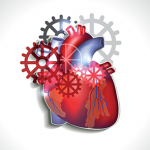
Medicine is one of the most challenging professions because it demands incredibly disparate skills. Physicians operate at the extremes of human existence—life and death—and therefore have to move rapidly and facilely through emotional realms. In their behavior, physicians are the ultimate multitaskers.
One Doc, Many Personae
Consider the surgeon. Once in the operating room, the surgeon is the supreme technician—composed, dispassionate, and focused entirely at the task at hand. Having just sawed a person in two amidst the smell of burning flesh and the puddling of thick red blood, he methodically extirpates the evil of cancer or takes out an old part and puts in the new. All of this occurs with the steadiness and precision of a Swiss watchmaker, as if the person on the table was merely a faulty machine needing some fixing.
Once the operation is over, however, the surgeon must transform into a different creature. As he takes off the mask and gown, he acquires a new persona to speak to the anxious family of the patient he has just sewn up. The surgeon is now different. He is concerned, compassionate, open to the flood of emotions that springs up no matter whether the news is good or bad. Now the surgeon is friend and counselor, like a clergyman who has to plumb the depths of feelings that any dire illness brings forth. And when the patient finally awakes from the anesthesia, the surgeon may be called upon to deliver the worst of all news with honesty, sensitivity, and empathy.
These transitions do not always come naturally and, like all physicians, surgeons are schooled to shift identities many times each day.
Just as physicians have to operate with enormous emotional range, they have to variously work alone or in teams. Medicine is a remarkable mélange of solitary activity and intense collaboration. Physicians are often entirely on their own and must make important decisions on the basis of their own instincts, without any help. Often, the physician cannot ask for help—the situation is too urgent and pressing. Immediate action is demanded and a physician has to have the confidence to go it alone.
Nevertheless, a physician has to blend into a team and cooperate with individuals who differ in age, education, profession, skill, earnings, and perspective—among a panoply of other attributes. The ward on a general hospital is as complicated as any other collective activity pursued by people. In that arena, the physician has to be a cog in the wheel even if he thinks he is more.
The vast majority of the time the system works. Physicians switch roles with aplomb and, like Superman, go into a phone booth or locker room and emerge a different person. Is it possible that the warm, caring doctor who thoughtfully answers patents’ questions is actually the same person as the nasty and autocratic surgeon who barks at nurses and recklessly flings instruments all over the operating room?
Occasionally, however, the physician forgets to whom he is talking. I heard recently from a colleague how a physician said to a man, “Your wife’s brain is turning to mush,” when describing an MRI that showed Alzheimer’s disease.
Consult All Experts for Guidelines
Our own specialty has recently experienced such errant behavior, although—in this case—the matter concerned team play and the failure of some of the participants to realize that they were not free agents operating on their own in a vacuum. As many of you know, the American Heart Association published an article in the journal Circulation on recommendations for the use of nonsteroidal anti-inflammatory drugs (NSAIDs) to treat musculoskeletal pain.1 Cardiologists are terrific doctors. They can do magic with their catheters and, as someone whose most difficult procedure is to put a needle into a swollen joint, I have the highest regard for a anyone who, while sweating in a vest of lead, can snake a catheter through the clogged ostium of a coronary artery and gingerly place a stent so that blood will once again flow. If I ever have chest pain, I promise I will submit to your ministrations without complaint or questioning.
While I marvel at the skill of cardiologists, I have to say that arthritis is not angina. While rheumatology may involve brains more than brawn, the care of patients in our specialty is a very intricate undertaking, full of twists, turns, and balancing acts of the first order. As we have discussed in previous issues of The Rheumatologist, as medicine has advanced and patients have grown older, complexity has risen astronomically. There are no simple solutions anymore and the days of “one disease, one drug” are long gone.
The only defense against complexity is teamwork and the recognition that we are all together in the struggle against disease. The practice of medicine today necessitates teamwork that must be ever stronger and more effective. Otherwise, we do our patients a great disservice.
Every advertisement for a hospital or medical center trumpets its teams. For cancer, the team has surgeons, oncologists, radiotherapists, and many others. For arthritis, the team has rheumatologists, orthopedists, physical and occupational therapists, psychologists, and—yes—cardiologists. I am happy to have cardiologists on my team because my patients are all prone to heart disease whether by dint of their age or the debilitating effects of inflammation.
Many others have commented on the substance of the Circulation article, and I will not dwell on the nuances of COX-1 and COX-2 inhibition and whether or not naproxen is cardioprotective. My point here is that development of a scientific statement on the management of musculoskeletal pain should not be the province of one specialty—and certainly not cardiologists. Further, consultation with one rheumatologist (no matter how bright and distinguished he may be) is no substitute for collaboration—the skirmishes, tussles, and give and take—required among skilled professionals when confronting an issue as thorny and convoluted as the cardiovascular side effects of NSAIDs. Any article on the management of musculoskeletal pain needs the input of all specialties involved.
As sport coaches like to say, “There is no ‘I’ in TEAM.” I do not like to use coaches as the source of wisdom, but in this case they are right.
To my friends the cardiologists I say, you can be on my team anytime. Please remember, I should be on yours.
Dr. Pisetsky is physician editor of The Rheumatologist and professor of medicine and immunology at Duke University Medical Center.

